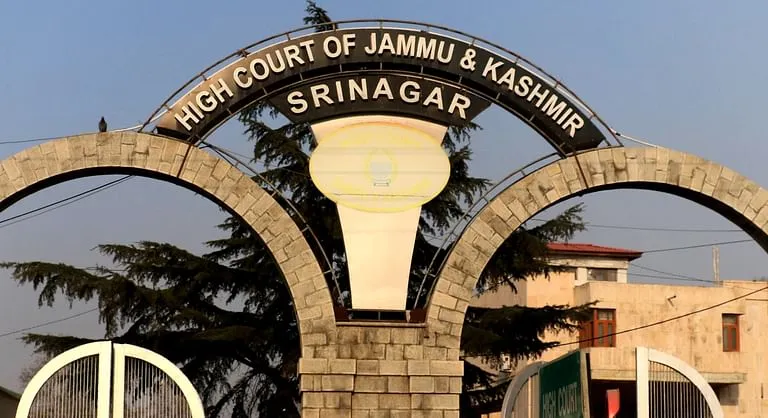Srinagar: The High Court of J&K and Ladakh Wednesday held that the courts were obliged to adopt a proactive role in the trial and to monitor the proceedings in aid of justice.
“The courts cannot afford to be mute spectators to whatever is being testified before them,” a division bench of Justice Sanjeev Kumar and Justice Rajesh Sekhri said.
The court recorded this while dismissing the government’s appeal against the judgment dated September 19, 2011, passed by the 2nd Additional Sessions Judge, Srinagar, (Trial Court) whereby the accused were acquitted in the case lodged based on an FIR for offenses under Sections 302 and 120-B of the Ranbir Penal Code (RPC) and 7/20 of the Indian Arms Act.
“The power of the court under Section 311 of Central CrPC and Section 165 of the Evidence Act, being complimentary to each other, confer vast and wide powers on Presiding Officers of the courts to elicit all necessary materials by playing a participatory role in the evidence collecting process,” the bench said.
It said that even if the prosecutor is remiss in some ways, the Presiding Officer of the court could control the proceedings effectively to ensure that the ultimate objective that is the truth is arrived at.
“This obligation on the part of the court becomes more pronounced if the presiding officer has reasons to believe that the prosecuting agency is not acting in a manner it is expected to act,” the bench said.
It said that a glance over the statements of most of the prosecution witnesses recorded under Section 161 CrPC would show that witnesses to the occurrence had testified that the deceased was fired at by unidentified terrorists.
However, it said that they could identify the assailants if produced before them.
Pointing out that the investigating agency, in such circumstances was obliged to conduct a Test Identification Parade of the accused persons, the bench said: “The object of Test Identification Parade is to test the observation and memory of a witness as to the identification of an accused, who is stranger to him.”
The bench underscored that as a general rule of law, dock identification of an accused for the first time in the court is a substantive piece of evidence and could form the basis for conviction, without the same being corroborated by any other evidence.
“However, since the probative value of dock identification is inherently weak, Test Identification of an accused is considered a safe rule of prudence as it corroborates dock identification,” the bench said. “It is manifest from the aforequoted principle of law enunciated by the Supreme Court that previous identification of an accused in the Test Identification Parade would corroborate dock identification of the accused, which is admissible in evidence.”
The bench said that in the present case, the least that was expected from the investigating agency was to get the test identification parade of the accused conducted in the presence of Executive Magistrate 1st Class.
Noting that it was a fit case where a retrial as a sequel to recall of the material prosecution witnesses should have been directed, the bench said: “However, in the absence of Test Identification Parade, due to serious remissness on the part of the investigating agency, we are of the view that examination of the remaining eyewitnesses will not change the complexion of the case and retrial shall be an exercise in futility.”
It said that given the facts and circumstances of the present case, there was no other option but to concur with the observation of the learned Trial Court that it was a case of “no evidence”.
Dismissing the appeal and upholding that judgment, the bench said; “Let a copy of this judgment be forwarded to the Director General of Police (DGP) and Director Prosecution for action against erring officers and officials as per the law.”






